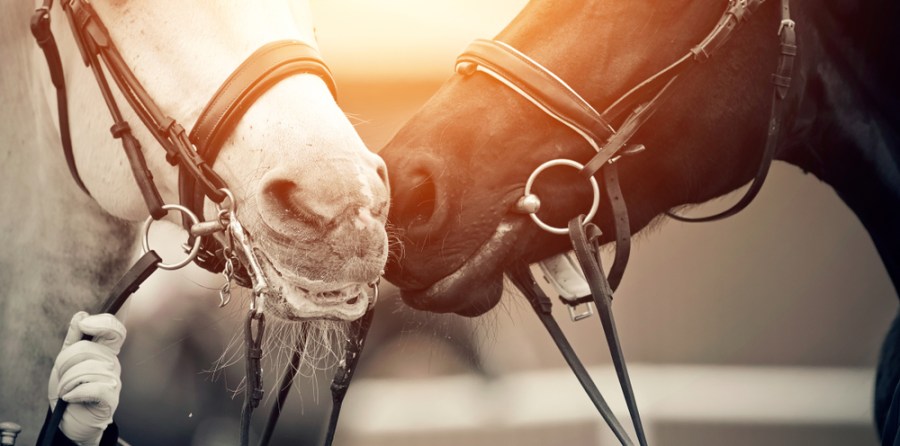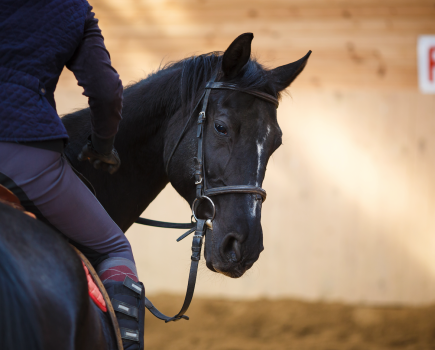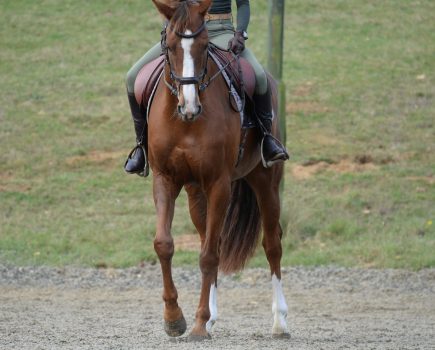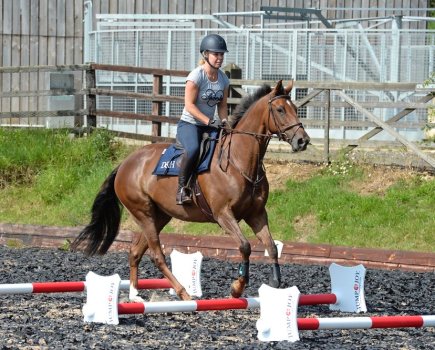Which bit is right for my horse? This is a question I have been asked so many times over the years. It’s a real dilemma for riders, with an overwhelming choice of bits available in tack rooms, shops and online.
My own journey into experimenting with bits started with the first horse I had who was capable of jumping a course of show jumps.
I had dreamt of sailing round the Hickstead Derby on a floaty Arab, his mane flying as we sailed over the fences, and down the infamous bank.
In reality, I had Bobby, an Irish hunter type, who was far to big for me at 16.2 hands — oh, and I had no brakes.
Yes, we could sail around a course of showjumps, but though I could steer him around the turns, I had no say on the speed at which we would launch over everything.
Loosening the rein
I should say here that there is also the choice of whether you even need a bit at all, as the choice in bitless bridles is plentiful. But again, how do you know which is best for your horse?
Advice I sought out for my own horse covered gadgets galore, but sticking with bits, I borrowed a Pelham.
This resulted in him grabbing the bit and charging with his head in the air, while a hackamore resulted in him pulling like a train.
And in a snaffle?
Well, where do I start. Bearing in mind that this was in the early 1980s, the main choices were a straight bar, French link, or double-jointed bit — and perhaps a D ring, eggbutt, or loose ring snaffle.
Mouthpieces were thick or thin, depending on how fleshy your horse’s tongue was.
To cut a long story short, after he galloped off with me, jumping a five bar gate, depositing me head-long into a barbed wire fence, something needed to change.
So now I was scared of being charged off with.
I would be tense, my fingers clinging onto the reins. I met a wonderful instructor, who took me back to the beginning, and taught me to walk and halt without using the reins.
That’s right — I had to leave my reins loose, and stop.
Trusting your seat
This challenged every fibre in my body.
My mind was screaming, “He will run away, how can I possibly let go?”
I learnt to trust my seat, and I experienced for the first time what a half-halt was — not tweaking the reins, but bracing my back, closing my legs.
Gradually, I understood what Bobby needed from me.
It wasn’t a rider who was a bag of nerves and hanging onto his mouth, but a rider who sits tall, is aware of their body, and develops a sense of feel for the whole horse — not just his mouth but his back, his neck, and his mind.
Bobby’s response to the discomfort and fear I put him in caused him to react as any horse would: to run away.
Two years later, I could ride him. We reached an accord.
I would not say we truly trusted each other all the time, but we were generally safe together.
My fear subsided, though I was always aware to pre-empt his tendency to dash off if I lost focus.
I trained my mind to hone in like a laser beam to keep him with me.
We went on to jump affiliated at Foxhunter level with some success.
I rode him in control, a steady canter, in a double-jointed snaffle.
I communicated with him using my body, and I no longer hung into the reins with my heart in my mouth.
So while he was not my dream of a floaty Arab, Bobby taught me so much. I was a proper showjumper!
Signs that a horse is not happy in their mouth
Problems in the mouth have a knock-on effect on the horse as a whole, including their:
- State of mind
- Willingness to be ridden
- Ability to bend equally in both directions — and so on.
Tension in the jaw, difficulty in working through the back, and a reluctance to flex at the poll are all indicators of discomfort in the horse’s mouth.
Other signs of discomfort are avoidance of the contact by overbending, or being above the bit, and hollowing the back.
Your horse is trying to let you know what the problem is.
Identifying the cause
So, if you asked me which bit is right for your horse, I would say that prioritising what is most important is key.
Good dentistry is essential to identify and correct any sharpness of the teeth affecting the way your horse uses their jaw.
Physical interventions, such as chiropractic or physiotherapy, would be advisable to correct long-term imbalance in the horse’s structure.
In my experience, these are namely issues in the Temporomandibular joint (TMJ), which is the junction of the horse’s lower jaw (mandible) with the skull.
Other troublesome areas include the horse’s joints, poll, and the lumbar back region.
Treatment can be costly, so I would look closer to home for a long-term solution and aim to prevent problems occurring before they start.
Once your horse’s physical issues have been dealt with, the rest is down to you, as a rider.
The choice of bit is down to budget, so it may be wise to borrow bits to try, to see what works for your horse.
Look at your contact
Fundamentally, no bit will be right for any horse if we, as riders, do not fully understand concept of contact.
Contact, which is one of the Scales of Training, is not just about focusing on the horse’s mouth and how you hold the reins.
A correct understanding of contact is essential to your horse’s physical and mental development, at all levels.
If the contact is not correct, then it is unlikely that you will be able to maintain a consistent level of progress.
For me, contact with the horse involves any part of us which is in contact with the horse: our seat, legs and hands.
All three body parts are essential for maintaining the horse’s balance so that they are able to work into a supporting rein.
The rein contact should never be stronger than the seat and leg aids, and the reins should never give an aid in isolation without the backup of seat and leg aids.
Signs of a happy mouth
These include:
- The horse turning easily in both directions, the transitions working, feeling balanced to ride.
- The horse should appear to be working the same with their hind legs as the front legs, and not looking ‘flashy’ in front and trailing behind.
- A novice horse will need more support from your back, legs and reins while they learn to balance and work in self-carriage. However, this doesn’t mean relying on the bit to hold the horse up.
- Your horse should appear curved through their top line from ears to tail and the neck should be in a lower carriage, but on no account should they be behind the bit.
- Their mouth should be quietly chewing the bit, not gnashing at it, or ducking behind the contact (ie overbent).
Listen to your horse
Your horse will let you know which bit is most comfortable and which suits their mouth.
They will also tell you how much contact they need at any one time — not just from your hands, but your seat and legs too.
Let the horse show you the amount of contact they need. If they are heavy in your hand, increase your seat and leg aids to support the horse, and then lighten the rein contact.
If your contact is correct, the horse works through their back correctly.
This is as a result of the way the bit is used, rather than the type of bit.
They key aspect for me is to have a happy, relaxed horse, with a comfortable mouth and a good understanding of contact.
Riding should be fun, not a fight.
Main image © Shutterstock






